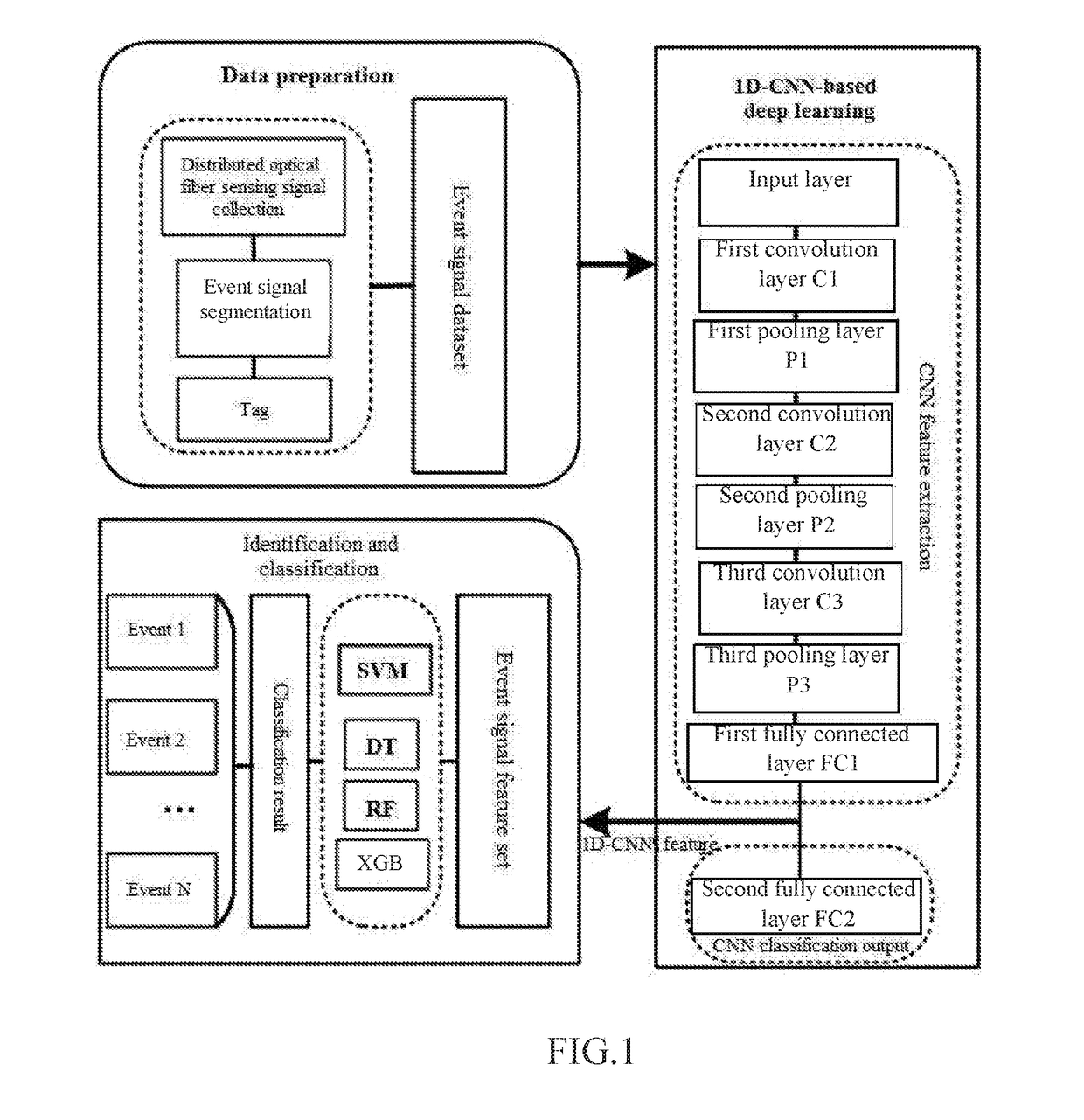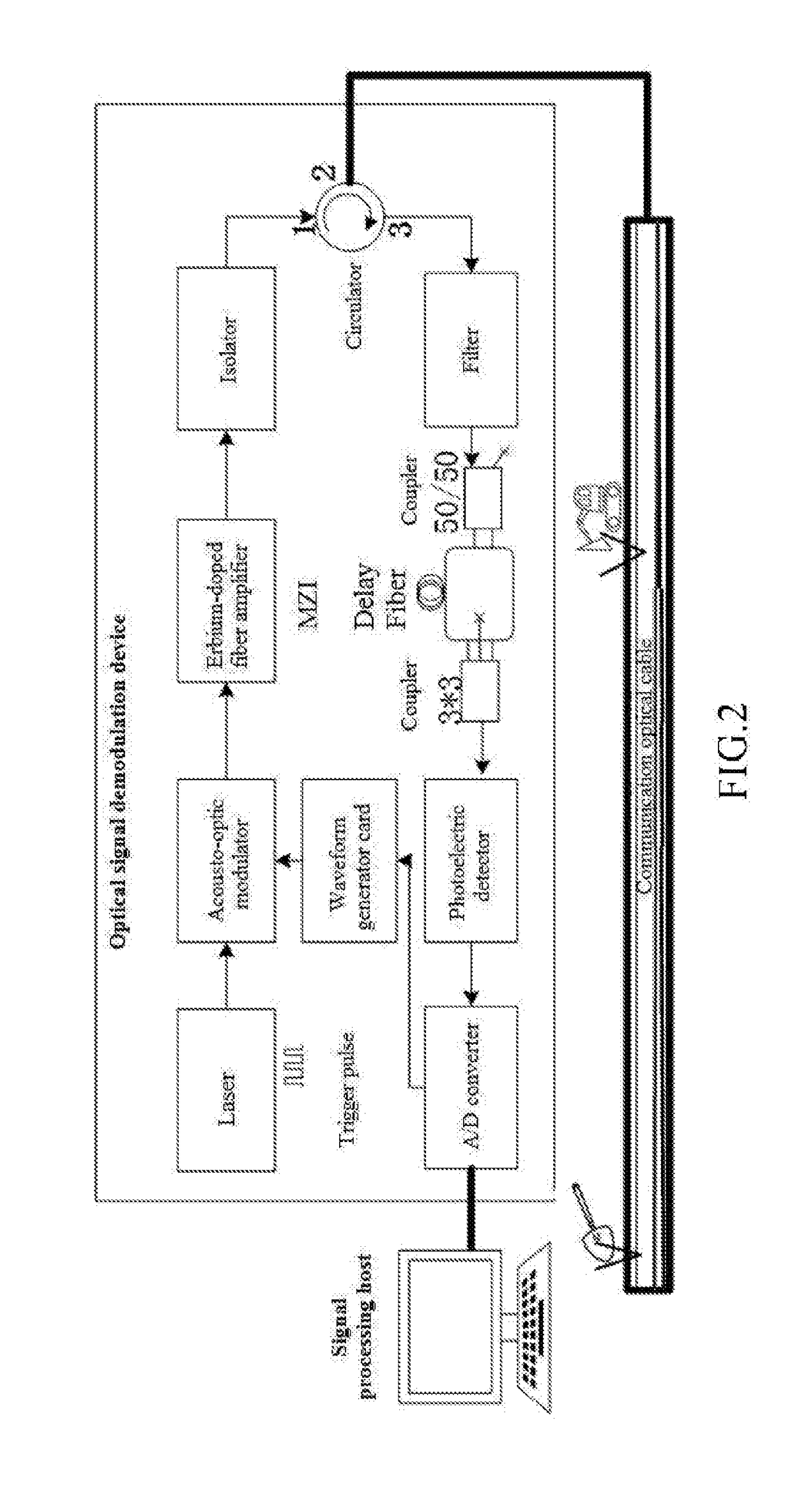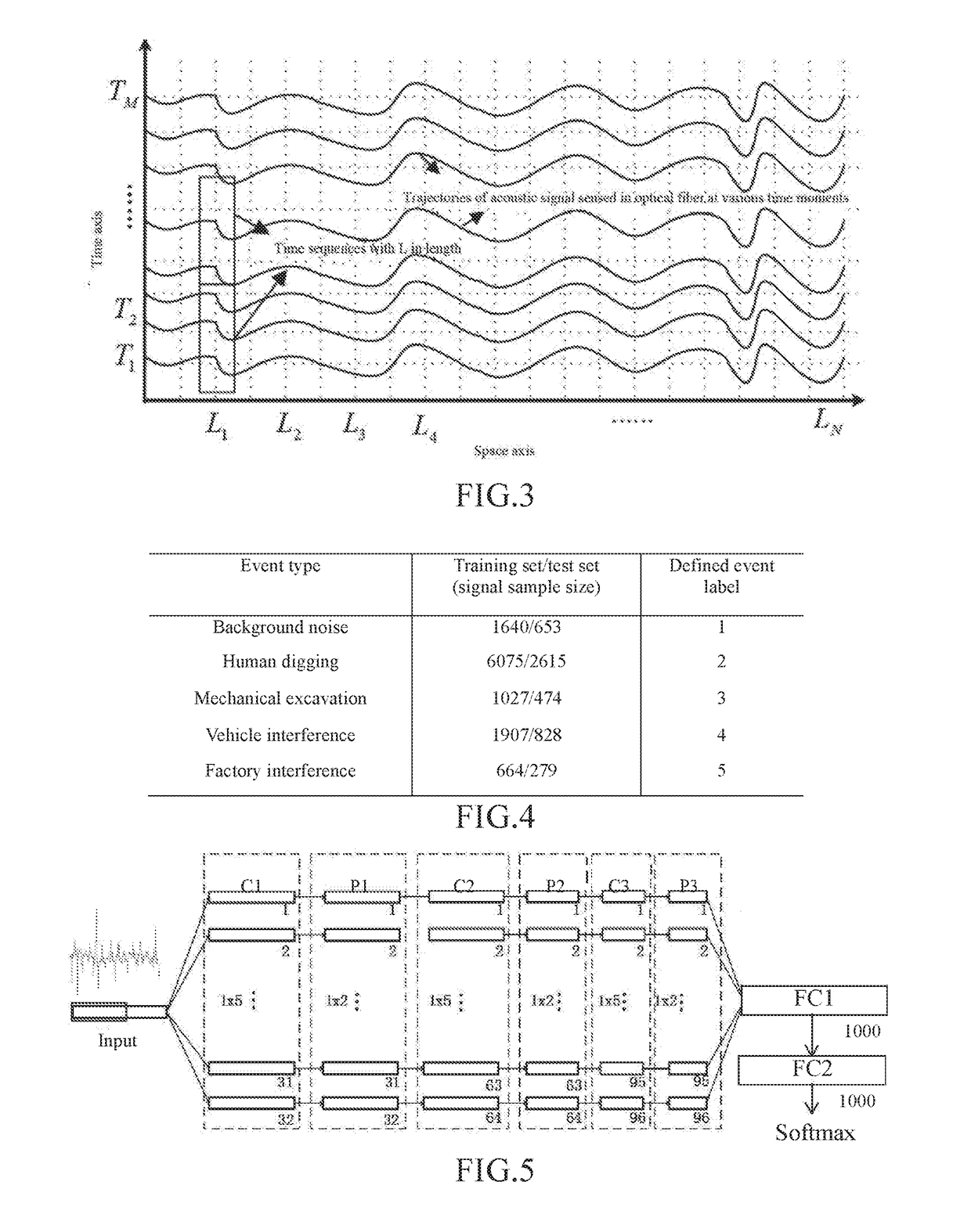1D-CNN-Based Distributed Optical Fiber Sensing Signal Feature Learning and Classification Method
a distributed optical fiber and signal feature technology, applied in the field of 1dcnnbased distributed optical fiber sensing signal feature learning and classification methods, can solve the problems of preventing the industry from being mature, restricting the progression of its large-scale application, and facing complex extensive monitoring environments, so as to improve the identification effect, improve the identification accuracy, and improve the accuracy of algorithm update speed
- Summary
- Abstract
- Description
- Claims
- Application Information
AI Technical Summary
Benefits of technology
Problems solved by technology
Method used
Image
Examples
first preferred embodiment
[0067]Take the application of the distributed optical fiber acoustic and vibration sensing signal feature learning and classification method based on a one-dimensional conventional neural network (1D-CNN) in long-distance pipeline safety monitoring for instance. As shown in FIG. 1, the whole signal processing flow is mainly divided into three parts.
[0068]Part 1: Data Preparation
[0069]Acoustic or vibration signals (i.e. distributed optical fiber sensing signals) along the pipeline against complex background environment of actual application site are collected with the distributed optical fiber acoustic and vibration sensing system hardware based on the phase-sensitive optical time domain reflectometer, time sequences of the pipeline event signals collected at all spatial points by the time period are segmented, and a typical event signal dataset is constructed.
[0070]Part 2: Constructing a One-Dimensional Conventional Neural Network and Conducting Deep Learning and Feature Extraction ...
second preferred embodiment
[0074]The system hardware for signal collection in the first preferred embodiment is a distributed optical fiber acoustic and vibration sensing system with phase-sensitive optical time domain reflectometry (Φ-OTDR) based on phase demodulation, and the structure and the working principle of the system are shown in FIG. 2. The system hardware is composed of three parts, namely optical detection cable, optical signal demodulation equipment and signal processing host. The optical detection cable is usually a common single-mode communication optical fiber and is generally laid and buried along underground pipelines, power transmission cables or city roads; alternatively, unoccupied fiber cores of communication optical cables laid along pipelines or roads can be directly utilized. The optical signal demodulation equipment is the core of the system, and the internal components mainly include optical devices and electrical devices. One path of continuous coherent optical signals is generate...
third preferred embodiment
[0077]Event signals in rows along the time axis are segmented according to the one-dimensional time sequences at each spatial point in the spatial-temporal response signal matrix accumulated in the second preferred embodiment, and a typical event signal dataset raw_data is constructed. In the present invention, a pipeline safety related typical event signal dataset raw_data is constructed by taking pipeline safety monitoring as an example. The specific operating process comprises steps of: successively intercepting event signals with time length L against the signal time sequences at each spatial point, as shown in the rectangular frame part of FIG. 3, taking the event signals as event signal samples, denoted as X1, X2 . . . , and respectively attaching labels according to actual event types.
[0078]During pipeline safety monitoring, typical event types usually include: stationary environmental noise, human digging, mechanical excavation, vehicle interference and factory interference ...
PUM
 Login to View More
Login to View More Abstract
Description
Claims
Application Information
 Login to View More
Login to View More - R&D
- Intellectual Property
- Life Sciences
- Materials
- Tech Scout
- Unparalleled Data Quality
- Higher Quality Content
- 60% Fewer Hallucinations
Browse by: Latest US Patents, China's latest patents, Technical Efficacy Thesaurus, Application Domain, Technology Topic, Popular Technical Reports.
© 2025 PatSnap. All rights reserved.Legal|Privacy policy|Modern Slavery Act Transparency Statement|Sitemap|About US| Contact US: help@patsnap.com



